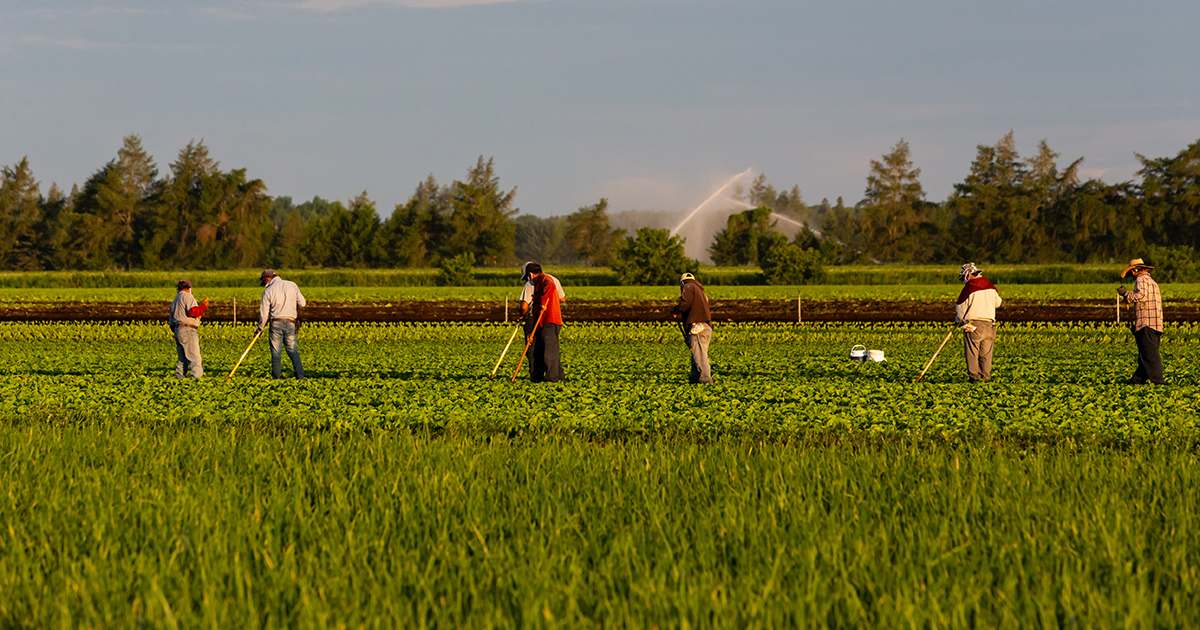AB Direct - Steers
Rail: 490.50-493.00 FOB feedlot (last week)
AB Direct - Heifers
Rail: 490.50-493.00 FOB feedlot (last week)
US Trade- Steers
Rail: 353.00-355.00 (IA, NE) last week
US Trade - Heifers
Rail: 353.00-355.00 (IA, NE) last week
Canadian Dollar
0.01

Labour market forecast predicts growing shortages across agricultural industries
Recent research examining worker shortages throughout Canada’s agricultural industry is projecting that the fruit and vegetable industry will bear the brunt of the domestic labour gap and could be required to fill more than 35,000 jobs during its peak season by 2030.
This funding, published in the Canadian Agricultural Human Resource Council’s (CAHRC) latest labour market report, Sowing Seeds of Change, would account for 35 per cent of the peak domestic labour gap heading into the next decade. The report provides an analysis of present-day labour market challenges as well as what is anticipated for 2030. This includes sector and industry vacancy rates, an assessment of the cost of labour shortages and insight into the recruitment and retention challenges.
Other industry-specific projections on the anticipated peak domestic labour gap include dairy (5,000), poultry and egg (2,420), beef (2,600), swine (3,080), aquaculture (285), grain and oilseed (3,680), greenhouse (34,940), sheep and goat (240), and agricultural support services (1,570).
Jennifer Wright, executive director of CAHRC, says these numbers emphasize what as a sector we continue to know, we must take action for agriculture to be able to attract and retain workers in Canada.
“Solving the labour and skill gap issue across all industry groups might not be easy, but it is essential to the sustainability of the sector and Canada’s ability to feed families here at home and abroad,” says Wright.
The peak domestic labour gap is defined as the number of workers a sector needs but is not able to find in Canada. This measurement does not account for the foreign workers agriculture relies on to fill the current workforce, who in 2022 represented 17 per cent of the agricultural workforce. Still, the report finds that even if Canada continues to depend on foreign workers, filling an anticipated 40 per cent of jobs in 2030, there would still be 22,200 vacant positions across all industry sectors.
The national report notes that agriculture is expected to experience retirements by 2030, which could amount to a loss of 30 per cent of its current workforce. Among those retirements, the tree fruit and vine, grain and oilseed, and beef industries are anticipated to have the largest share due to their older age profiles and occupational makeup.
Some of the ways the research recommends that Canadian agriculture grow its workforce include: focusing on the opportunity that immigration presents, addressing infrastructure needs, educating the public to improve perceptions of agriculture, developing and updating HR management practices and leveraging new technology and automation.
This labour market forecast will serve as a supporting document for CAHRC’s National Workforce Strategic Plan (NWSP). The NWSP exists as a national framework to address labour shortages and skill gaps throughout the sector. To date, more than 100 stakeholders, including primary producers, food and beverage manufacturers, educational institutions, producer groups, industry associations and government officials, have participated in the development of this strategic plan.


